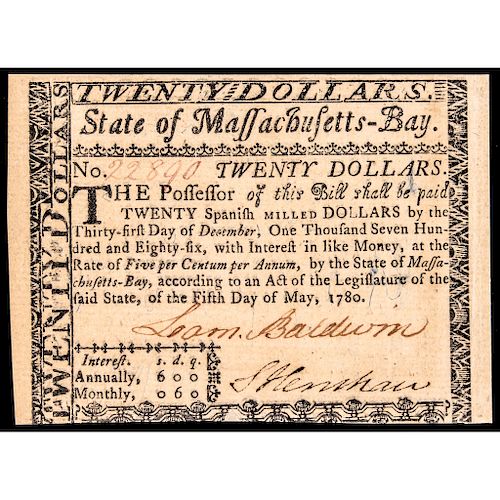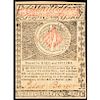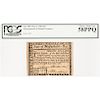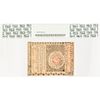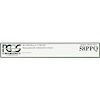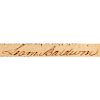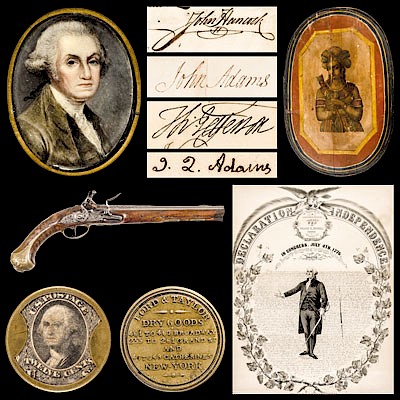Colonial Currency COLONEL LOAMMI BALDWIN Signed 1780 MASS Note
Lot 111
Estimate:
$500 - $600
Absentee vs Live bid
Two ways to bid:
- Leave a max absentee bid and the platform will bid on your behalf up to your maximum bid during the live auction.
- Bid live during the auction and your bids will be submitted real-time to the auctioneer.
Bid Increments
| Price | Bid Increment |
|---|---|
| $0 | $10 |
| $200 | $20 |
| $300 | $25 |
| $500 | $50 |
| $1,000 | $100 |
| $2,000 | $200 |
| $3,000 | $250 |
| $5,000 | $500 |
| $10,000 | $1,000 |
| $20,000 | $2,000 |
| $30,000 | $2,500 |
| $50,000 | $5,000 |
| $100,000 | $10,000 |
| $200,000 | $20,000 |
| $300,000 | $25,000 |
| $500,000 | $50,000 |
About Auction
By Early American History Auctions
Jun 1, 2019
Set Reminder
2019-06-01 12:00:00
2019-06-01 12:00:00
America/New_York
Bidsquare
Bidsquare : Historic Autographs, Colonial Currency, Political Americana & Revolutionary War Era
https://www.bidsquare.com/auctions/early-american-history-auctions/historic-autographs-colonial-currency-political-americana-revolutionary-war-era-4152
Historic Autographs, Coins, Currency, Political, Americana, Historic Weaponry and Guns, John Adams, Thomas Jefferson, Early American History Auctions auctions@earlyamerican.com
Historic Autographs, Coins, Currency, Political, Americana, Historic Weaponry and Guns, John Adams, Thomas Jefferson, Early American History Auctions auctions@earlyamerican.com
- Lot Description
Famous Signers on Colonial Currency
1780 Massachusetts "U.S. Guaranteed" Issue $20 Note
COLONEL LOAMMI BALDWIN (1744-1807). American Engineer, Politician, and a Soldier in the American Revolutionary War who on the night of December 25-26, 1776 crossed the Delaware with General George Washington and fought in the Battle of Trenton.
State of Massachusetts. May 5, 1780. Twenty Dollars. "Guaranteed" by the United States Issue. Fully Signed and Issued Paper Money Note including by "Loam(mi) Baldwin." No Cancel. PCGS graded Choice About New-58 Premium Paper Quality. Fr. MA-285. A crisp note having rich deep printed text and designs in red and black, Fully Signed with vivid brown signatures and serial number. Peter Boyer signature in red on the "Guaranteed" line for Interest by the United States at 5% per annum as seen in the printed schedule on its face side at lower left. There are four full large margins both face and back providing the centering and choice eye appeal of being Uncirculated.
Colonel Loammi Baldwin (January 10, 1744 - October 20, 1807) was a noted American engineer, politician, and a soldier in the American Revolutionary War.
Baldwin is known as the Father of American Civil Engineering. His five sons, Cyrus Baldwin (1773-1854), Benjamin Franklin Baldwin (1777-1821), Loammi Baldwin, Jr. (1780-1834), James Fowle Baldwin (1782-1862), and George Rumford Baldwin (1798-1888) were also well-known engineers. He surveyed and was responsible for the construction of the Middlesex Canal, but today he is perhaps best remembered for the Baldwin apple which he developed at his farm, or rather he recognized its potential and propagated it throughout the northeast. The apple had been discovered on the farm of John Ball in Wilmington, Massachusetts, around 1750, and named Woodpecker by a later owner of the farm. Colonel Baldwin's promotion of the apple occurred after 1784. He was also a surveyor and plantation co-owner in Hartford, Maine, which at that time was known as East Butterfield.
In 1774 Baldwin enlisted in a regiment, and commanded the Woburn militia at the Battle of Lexington and Concord as a major. He is recorded as having described the events of April 19, 1775 as follows [2] "We mustered as fast as possible. The Town turned out extraordinary, and proceeded toward Lexington." As a major at the time he continues "I rode along a little before the main body, and when I was nigh Jacob Reed's (at present Durenville) I heard a great firing; proceeded on, soon heard that the Regulars had fired upon Lexington people and killed a large number of them. We proceeded on as fast as possible and came to Lexington and saw about eight or ten dead and numbers wounded." He then, with the rest from Woburn, proceeded to Concord by way of Lincoln meeting house, ascended a hill there, and rested and refreshed themselves a little. Then follows a particular account of the action and of his own experience. He had "several good shots," and proceeded on till coming between the meeting-house and Buckman's tavern at Lexington, with a prisoner before him, the cannon of the British began to play, the balls flying near him, and for safety he retreated back behind the meeting-house, when a ball came through near his head, and he further retreated to a meadow north of the house and lay there and heard the balls in the air and saw them strike the ground. Woburn sent to the field on that day, one hundred and eighty men. At the beginning of the war he enlisted in the 26th Continental Regiment commanded by Colonel Samuel Gerrish. Here he rapidly advanced to be lieutenant-colonel, and upon Colonel Gerrish's retirement in August 1775, he was placed in command of the regiment, and was soon commissioned colonel.
Until the end of 1775, Baldwin and his men remained near Boston, but in April 1776, he was ordered with his command to New York City. He took part in the Battle of Pell's Point on October 18, 1776.
On the night of December 25-26, 1776 in the face of a violent and extremely cold storm of snow and hail, General Washington and his army crossed the Delaware to the New Jersey side, and fought the Battle of Trenton on the morning of December 26. Baldwin and his regiment participated in both the crossing and the fight. In 1777, Baldwin resigned from the Continental Army because of ill health.
Baldwin was elected a Fellow of the American Academy of Arts and Sciences in 1782. He opposed Shays' Rebellion. His published work as a member of the AAAS included early experiments with electricity "An account of a Curious Appearance of the Electrical Fluid," (Memoirs Am. Acad. Vol. 1, 1785, pp. 257-259); and "Observations on Electricity and an Improved Mode of Constructing Lightning Rods," (Memoirs, Vol. 2, pt. 2, 1804, pp. 96-104). The first paper was written in 1783, and the "curious appearance" described was produced by raising an electrical kite at the time of a thunder shower. The experiments, however, were tried in July, 1771. At that time the author mentions that there stood some lofty trees near his house, and also a shop near by it. His parents, family, and neighbors witnessed the "electrical effect" he succeeded in producing. The date of preparing the second article was January 25, 1797.
Baldwin married July 9, 1772, Mary Fowle (died 1786 age 39) daughter of James Fowle, Jr. and Mary Reed, and had four sons. He married again, May 26, 1791, Margaret Fowle (1747-1799), daughter of Josiah and Margery Carter, and had a son and a daughter.
Howard Means in Johnny Appleseed: The Man, the Myth, The American Story, references Baldwin as a cousin of John Chapman (Johnny Appleseed.)
- Shipping Info
-
Early American provides in-house worldwide shipping. Please contact us directly if you have questions about your specific shipping requirements.
-
- Buyer's Premium



 EUR
EUR CAD
CAD AUD
AUD GBP
GBP MXN
MXN HKD
HKD CNY
CNY MYR
MYR SEK
SEK SGD
SGD CHF
CHF THB
THB